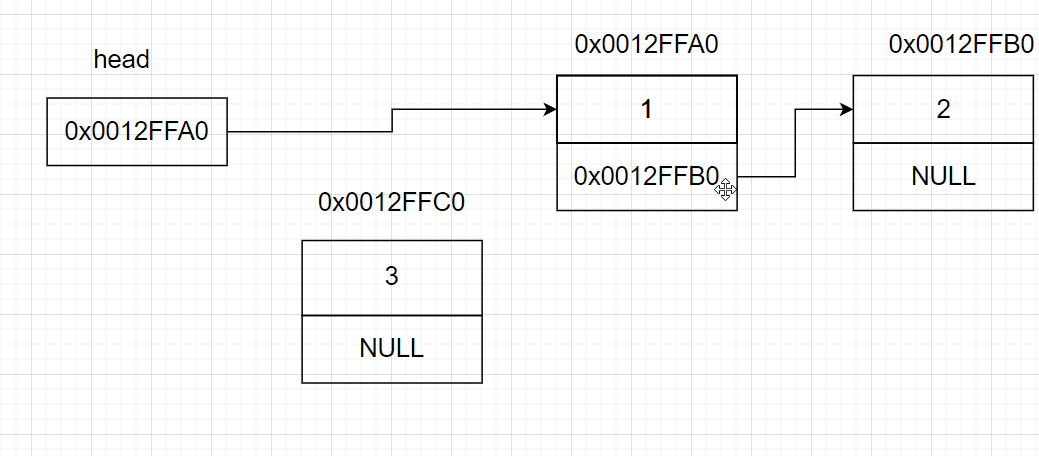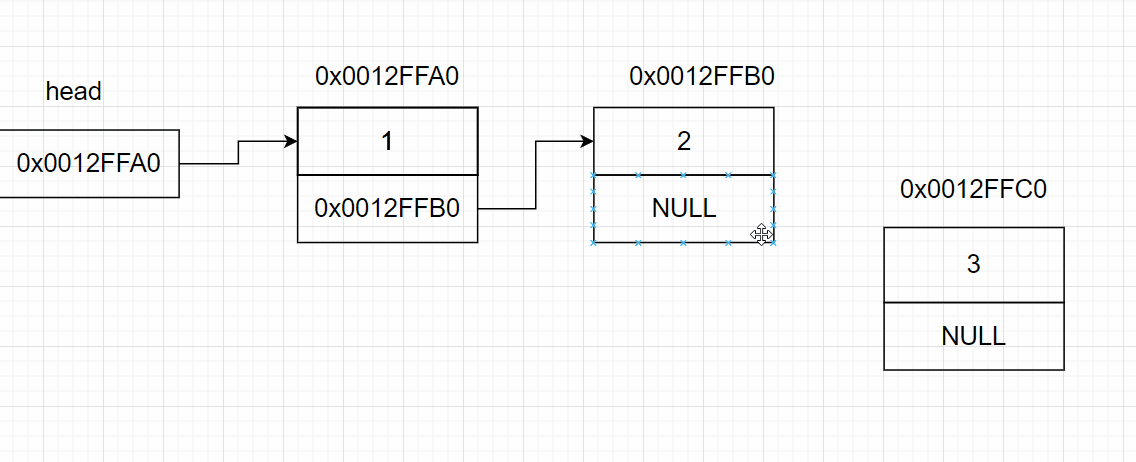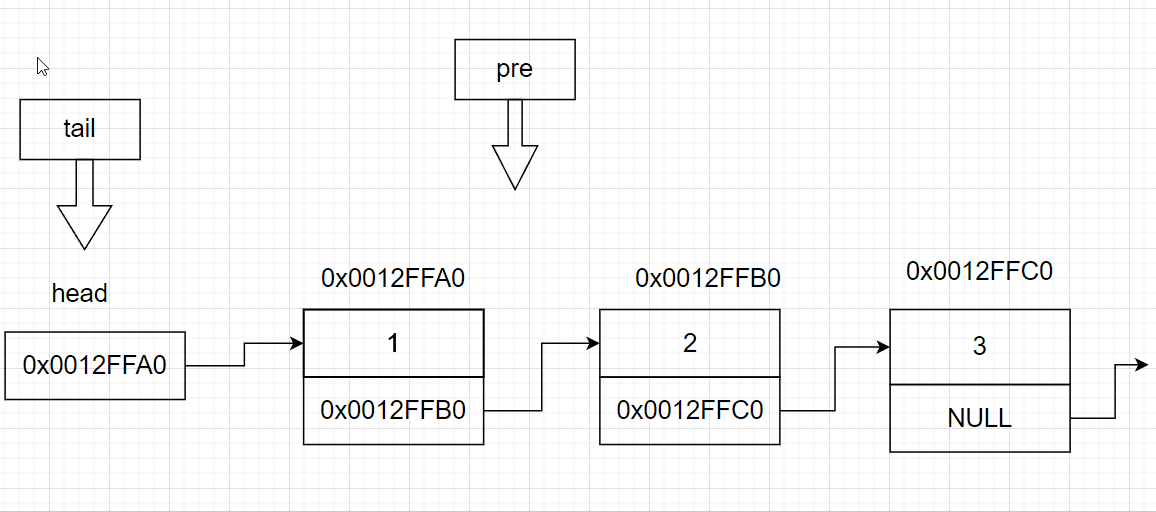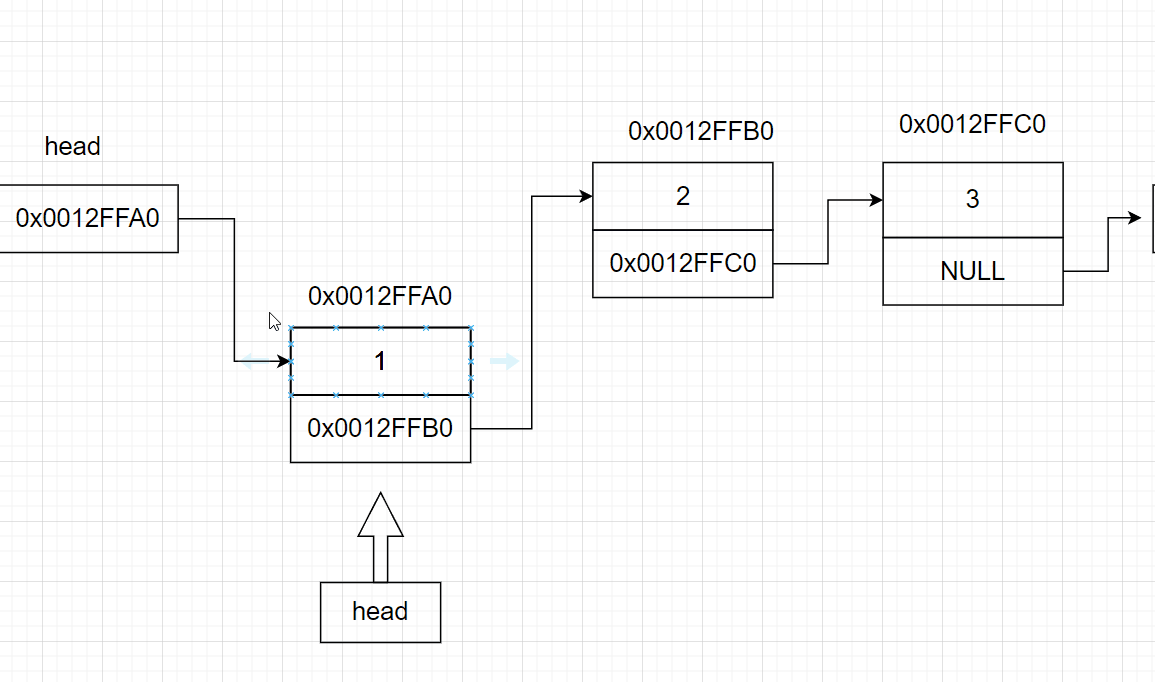C语言数据结构之单链表怎么实现
导读:本文共2997字符,通常情况下阅读需要10分钟。同时您也可以点击右侧朗读,来听本文内容。按键盘←(左) →(右) 方向键可以翻页。
摘要: 一.为什么使用链表在学习链表以前,我们存储数据用的方式就是数组。使用数组的好处就是便于查找数据,但缺点也很明显。使用前需声明数组的长度,一旦声明长度就不能更改插入和删除操作需要移动大量的数组元素,效率慢只能存储一种类型的数据.为了解决上述的问题,我们就可以使用链表来存储数据。二.链表的概念概念:链表是一种物理存储结构上非连续、非顺序的存储结构,数据元素的逻辑顺序... ...
音频解说
目录
(为您整理了一些要点),点击可以直达。一.为什么使用链表
在学习链表以前,我们存储数据用的方式就是数组。使用数组的好处就是便于查找数据,但缺点也很明显。
使用前需声明数组的长度,一旦声明长度就不能更改
插入和删除操作需要移动大量的数组元素,效率慢
只能存储一种类型的数据.
为了解决上述的问题,我们就可以使用链表来存储数据。
二.链表的概念
概念:链表是一种物理存储结构上非连续、非顺序的存储结构,数据元素的逻辑顺序是通过链表中的指针链接次序实现的

三.链表的实现
3.1 创建链表前须知
结点:链表中每一个元素称为“结点”,每个结点都应包括两个部分:一为用户需要用的实际数据;二为下一个结点的地址,
头结点:在单链表的第一个结点之前附设一个结点,这个节点不存储数据,称之为头结点

3.2 定义结构体
#include<stdio.h>#include<stdlib.h>#include<assert.h>typedefintSLDateType;//链表中存储的数据类型,可换成其他typedefstructSListNode{ SLDateTypedate; structSListNode*next;//指向下一个节点的指针}SListNode;3.3 申请一个节点
SListNode*BuyListNode(SLDateTypex){SListNode*newNode=(SListNode*)malloc(sizeof(SListNode));if(NULL==newNode){printf("mallocerror\n");//内存开辟失败exit(-1);}else{newNode->date=x;//给新节点赋值newNode->next=NULL;}returnnewNode;}3.4 链表的头插
voidSListPushFront(SListNode**pphead/*要改动头指针,所以要传递二级指针*/,SLDateTypex){SListNode*newNode=BuyListNode(x);//申请节点newNode->next=*pphead;*pphead=newNode;}
3.5 链表的尾插
voidSListPushBack(SListNode**pphead,SLDateTypex){SListNode*newNode=BuyListNode(x);if(*pphead==NULL)//若头指针为空,则链表为空链表,直接将新节点接到头指针后{*pphead=newNode;}else{SListNode*tail=*pphead;while(tail->next!=NULL)//找链表的尾部{tail=tail->next;}tail->next=newNode;//将新节点接到尾部}}
3.6 链表的尾删
voidSListPopBack(SListNode**pphead){ assert(pphead); if(*pphead==NULL)//链表为空,则不进行任何操作 { return; } elseif((*pphead)->next==NULL)//链表只有一个节点 { free(*pphead); *pphead=NULL; } else//其余情况 { SListNode*tail=*pphead;//链表的尾部节点 SListNode*pre=NULL;//链表尾的前一个节点 while(tail->next!=NULL)//找尾 { pre=tail; tail=tail->next; } pre->next=tail->next;//将尾节点的指针域赋值给前一个节点的指针域 free(tail); }}
3.7 链表的头删
voidSListPopFront(SListNode**pphead){assert(pphead);if(*pphead==NULL)//链表为空什么也不做{return;}else{SListNode*head=*pphead;//记录原本的第一个节点*pphead=head->next;//让头指针指向第二个节点free(head);//释放第一个节点}}
3.8 寻找某节点
SListNode*SListFind(SListNode*phead,SLDateTypex){SListNode*cur=phead;while(cur!=NULL){if(cur->date==x)//找到则返回该节点{returncur;}cur=cur->next;}returnNULL;//未找到则返回空}3.9 在指定节点前插入节点
voidSListInsert(SListNode**pphead,SListNode*pos/*要插入的位置*/,SLDateTypex){ assert(pphead); assert(pos); if(*pphead==pos) { SListPushFront(pphead,x); } else { SListNode*cur=*pphead;//当前所指向的位置 SListNode*pre=NULL;//前一个节点 while(cur!=pos) { pre=cur; cur=cur->next; } SListNode*newNode=BuyListNode(x); pre->next=newNode; newNode->next=cur; }}3.10 删除指定节点前的节点
voidSListErase(SListNode**pphead,SListNode*pos/*要插入的位置*/){ assert(pphead); assert(pos); if(*pphead==pos) { SListPopFront(pphead); } else { SListNode*cur=*pphead; SListNode*pre=*pphead; while(cur!=pos) { pre=cur; cur=cur->next; } pre->next=cur->next; free(cur); }}3.11 链表的销毁
voidSListDestory(SListNode**pphead){if(*pphead==NULL){return;}else{while(*pphead!=NULL){SListNode*cur=*pphead;*pphead=cur->next;free(cur);}}} </div> <div class="zixun-tj-product adv-bottom"></div> </div> </div> <div class="prve-next-news">本文:
C语言数据结构之单链表怎么实现的详细内容,希望对您有所帮助,信息来源于网络。